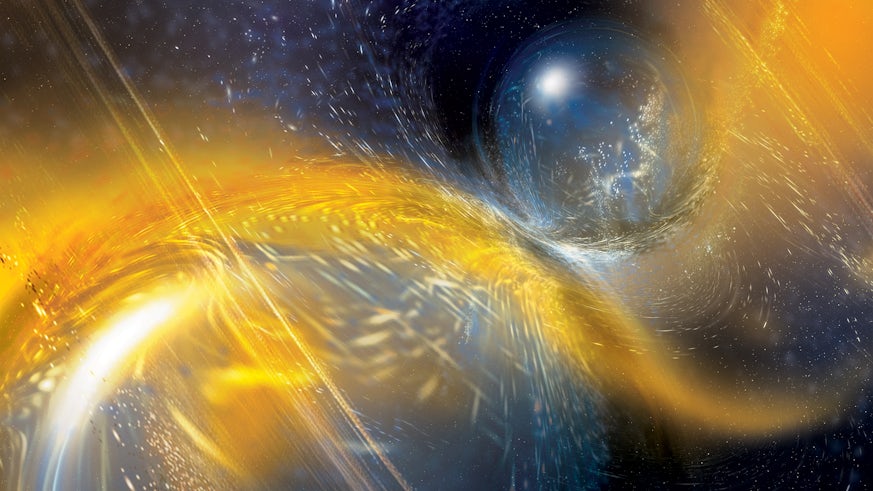Scientists spot spectacular neutron star collision
9 January 2020

The spectacular collision of two neutron stars over 500 million light-years away from Earth has been spotted through the detection of gravitational waves.
The neutron stars – remnants of dying stars that undergo catastrophic explosions as they collapse at the end of their lives – merged into an unusually large single object that was around 3.4 times the mass of our sun, the team report.
The discovery was made by a large group of international scientists working for the LIGO Scientific Collaboration and the Virgo Collaboration.
The Gravity Exploration Institute (GEI) at Cardiff University are key members of LIGO and have made important contributions to the detection of gravitational waves to date.
Dr Vivien Raymond, from the School of Physics and Astronomy, was the co-leader of the team that determined the properties of the merging objects in this latest detection.

This new gravitational-wave source was really a surprise. It does not quite fit what we expected and is hinting at the possibility of an unexpectedly heavy class of neutron stars in our universe, or perhaps surprisingly small black holes. Gravitational-wave astrophysics is letting us see a new side of the Universe.
Gravity Exploration Institute
The neutron star merger was first detected on April 25, 2019 using a detector in Livingston, Louisiana and is just the second time that such an event has been spotted using gravitational waves.
Neutron stars are the smallest, densest stars known to exist and are formed when massive stars explode in supernovas. These objects are so dense that just a teaspoon of neutron star material would have a mass of about a billion tons.
As the two neutron stars drifted closer together they stretched and distorted space-time giving off energy in the form of powerful gravitational waves – tiny ripples in space-time – before smashing into each other.
Research undertaken at Cardiff University has laid the foundations for how we go about detecting gravitational waves with the development of novel algorithms and software that have now become standard search tools for detecting the elusive signals.
The new findings have been announced at a press briefing in Honolulu, Hawaii and submitted to The Astrophysical Journal Letters.
Share this story
It is a friendly, approachable School with a strong commitment to teaching excellence and world class research in physics and astronomy.



